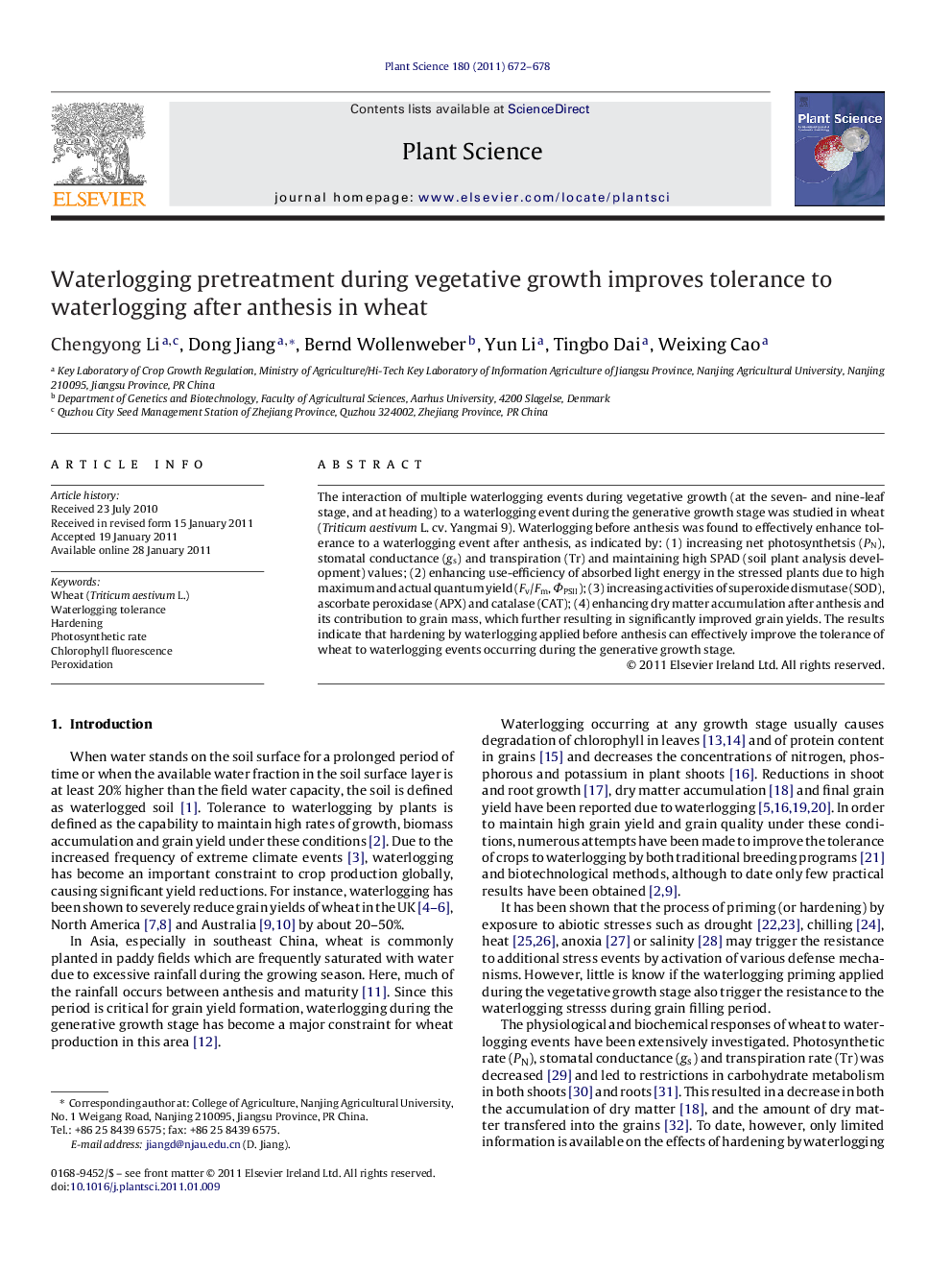| Article ID | Journal | Published Year | Pages | File Type |
|---|---|---|---|---|
| 2017586 | Plant Science | 2011 | 7 Pages |
The interaction of multiple waterlogging events during vegetative growth (at the seven- and nine-leaf stage, and at heading) to a waterlogging event during the generative growth stage was studied in wheat (Triticum aestivum L. cv. Yangmai 9). Waterlogging before anthesis was found to effectively enhance tolerance to a waterlogging event after anthesis, as indicated by: (1) increasing net photosynthetsis (PN), stomatal conductance (gs) and transpiration (Tr) and maintaining high SPAD (soil plant analysis development) values; (2) enhancing use-efficiency of absorbed light energy in the stressed plants due to high maximum and actual quantum yield (Fv/Fm, ΦPSII); (3) increasing activities of superoxide dismutase (SOD), ascorbate peroxidase (APX) and catalase (CAT); (4) enhancing dry matter accumulation after anthesis and its contribution to grain mass, which further resulting in significantly improved grain yields. The results indicate that hardening by waterlogging applied before anthesis can effectively improve the tolerance of wheat to waterlogging events occurring during the generative growth stage.
Research highlights► Earlier waterlogging enhanced Pn of later waterlogged wheat leaf. ► Earlier waterlogging improved light use efficiency in later waterlogged wheat leaf. ► Earlier waterlogging alleviated oxidative damage to leaf by later waterlogging. ► Waterlogging hardening improved tolerance to a later waterlogging in wheat.
